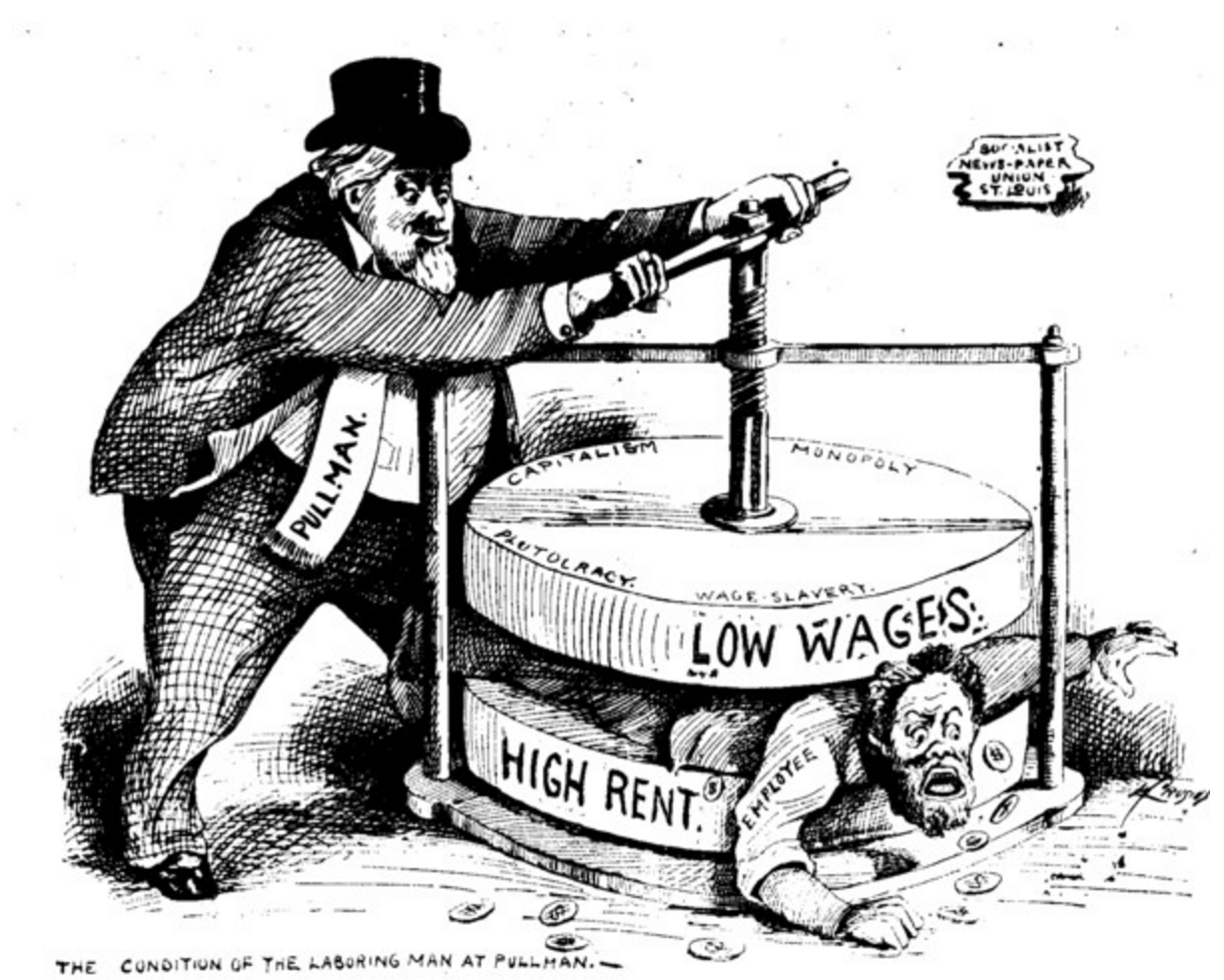Robby May
Ashley Rossi
AP US History 🇺🇸
454 resourcesSee Units
As industrialization boomed, the gap between the rich and the poor expanded. As the workforce grew and became more diverse, many workers worked long hours in unsafe conditions for very low pay. Many young children also worked in these harsh conditions and there was no compensation for workers injured on the job. 😓
Anti-Union Techniques
With a surplus of cheap labor, management held most of the power in its struggles with organized labor. Strikers could easily be replaced by bringing in strikebreakers, or scabs – unemployed persons desperate for jobs. They also used the following techniques for defeating unions:
- Lockout: closing a factory to break a labor movement before it could get organized.
- Blacklists: names of pro-union workers circulated among employers.
- Yellow-dog contracts: workers being told, as a condition for employment, that they must sign an agreement not to join a union.
- Calling in private guards and state militia to put down strikes.
- Obtaining court injunctions (a court order to stop a strike) against strikes.
Early Unions
In an effort to protect their rights, workers created labor unions. The first of these groups was the National Labor Union, which formed in 1866. This group fought for eight-hour workdays, greater equality in the workplace, and the right to organize. 🛠️ Unfortunately, the economic Panic of 1873 led to decreased membership for the National Labor Union.
The Knights of Labor formed in 1869. They too championed for 8-hour work days and the ability to organize, but also aimed for the abolishment of child labor and monopolistic trusts.
Haymarket Riot

Image Courtesy of Wikimedia
The 1886 Haymarket Riot, 💣 in which a Chicago labor protest turned violent, was the downfall of the Knights of Labor. Chicago had a small anarchist population at the time and, to this day, nobody knows who threw the bomb that killed eight people.
What is clear 🔍 from the Haymarket Affair is that labor unions suffered from it. The incident led many to view labor unions as radical, anarchist organizations, which was further fueled by the growing Nativist sentiment of the time.
American Federation of Laborers
The American Federation of Laborers, led by Samuel Gompers, focused on narrower goals: better wages and better working conditions. They grew to become the largest labor union by 1901. Even so, their initial success was limited.
These unions would sometimes organize their efforts in strikes. However, more often than not, the federal government supported big business and, in some instances, forcefully ended workers’ efforts.
Strikes
The most notable example of this is the Great Railroad Strike of 1877, in which federal troops intervened to end the strikes. Years later at the Pullman Strike of 1894, the federal government used a court injunction to bring worker resistance to a halt. In the image below, titled “The Condition of the Laboring Man at Pullman,” the employee is slowly crushed between low wages and high rent.

Image Courtesy of The Gilded age
In the Homestead Strike of 1892, Henry Clay Frick (manager of Carnegie’s Homestead Steel mill) incited resistance by reducing workers’ wages. The workers went on strike and Frick responded by locking the workers out of the plant. The workers surrounded it and Frick hired a small private army, the Pinkertons, to drive them off. Workers spotted the Pinkertons and pinned them down with gunfire and forced them to surrender. The Pennsylvania governor ordered the militia to impose peace at Homestead.
🎥 Watch: AP US History - Industrialization and Gilded Age
Browse Study Guides By Unit
🌽Unit 1 – Interactions North America, 1491-1607
🦃Unit 2 – Colonial Society, 1607-1754
🔫Unit 3 – Conflict & American Independence, 1754-1800
🐎Unit 4 – American Expansion, 1800-1848
💣Unit 5 – Civil War & Reconstruction, 1848-1877
🚂Unit 6 – Industrialization & the Gilded Age, 1865-1898
🌎Unit 7 – Conflict in the Early 20th Century, 1890-1945
🥶Unit 8 – The Postwar Period & Cold War, 1945-1980
📲Unit 9 – Entering Into the 21st Century, 1980-Present
🚀Thematic Guides
🧐Multiple Choice Questions (MCQ)
📋Short Answer Questions (SAQ)
📝Long Essay Questions (LEQ)
📑Document Based Questions (DBQ)
📆Big Reviews: Finals & Exam Prep
✍️Exam Skills (MC, SAQ, LEQ, DBQ)

Fiveable
Resources
© 2023 Fiveable Inc. All rights reserved.